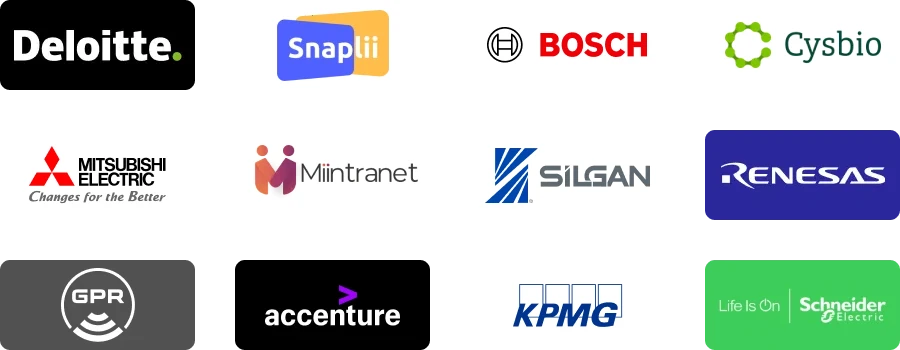| REPORT ATTRIBUTE |
DETAILS |
| Historical Period |
2019-2022 |
| Base Year |
2023 |
| Forecast Period |
2024-2032 |
| Enzyme Replacement Therapy (ERT) market Size 2024 |
USD 10,705.2 million |
| Enzyme Replacement Therapy (ERT) market, CAGR |
6.36% |
| Enzyme Replacement Therapy (ERT) market Size 2032 |
USD 17,531.59 million |
Market Overview:
The global Enzyme Replacement Therapy (ERT) market is projected to grow from USD 10,705.2 million in 2024 to USD 17,531.59 million by 2032, reflecting a compound annual growth rate (CAGR) of 6.36%.
This growth trajectory underscores the increasing demand for ERT solutions, driven by their essential role in treating enzyme deficiencies and related disorders. The market’s expansion is indicative of the rising prevalence of rare, chronic, and inherited disorders, which necessitate effective treatment options.
Several key drivers are propelling the growth of the Enzyme Replacement Therapy market. The rising incidence of metabolic disorders and increased awareness of genetic disorders are primary factors. Additionally, the broadening application of ERT in diverse industries such as healthcare and biotechnology is contributing to market growth. Technological advancements in enzyme formulations and delivery methods are enhancing the efficacy and safety of ERT, further driving its adoption. Moreover, favourable reimbursement policies and improving healthcare infrastructure are supporting the market’s expansion. The increasing number of products being approved and introduced in the market is also fostering the demand for ERT solutions.
Regionally, the Enzyme Replacement Therapy market exhibits varied growth patterns. North America holds a dominant position, driven by well-developed healthcare infrastructure and the presence of leading market players. The region’s market share is further supported by government support for research and development and ease of access to advanced therapies. Europe follows closely, with stringent regulations and a growing focus on rare disease management. The Asia-Pacific region is anticipated to witness the highest growth rate, fuelled by increasing awareness of genetic disorders and the adoption of advanced healthcare solutions. The Middle East and Africa, along with Latin America, are also expected to experience moderate growth, supported by improving economic conditions and growing awareness of ERT solutions.
Access crucial information at unmatched prices!
Request your sample report today & start making informed decisions powered by Credence Research Inc.!
Download Sample
Market Drivers:
Rising Incidence of Metabolic Disorders:
The increasing prevalence of metabolic disorders is a significant driver for the Enzyme Replacement Therapy (ERT) market. Metabolic disorders, such as Gaucher disease, Fabry disease, and Pompe disease, are caused by enzyme deficiencies that lead to the accumulation of toxic substances in the body. For instance, according to the Cleveland Clinic, around 6,000 people in the U.S. were suffering from Gaucher disease in 2020, with approximately 95% of them having type 1 Gaucher. The rising incidence of these disorders necessitates effective treatment options, thereby driving the demand for ERT.
Increased Awareness of Genetic Disorders:
Growing awareness of genetic disorders is another key driver for the ERT market. Public health initiatives and educational campaigns are raising awareness about the importance of early diagnosis and treatment of genetic disorders. For example, the Genetic and Rare Diseases Information Centre defines a rare disease as one that affects fewer than 200,000 individuals. Increased awareness is leading to higher diagnosis rates and a greater demand for effective treatments like ERT. This heightened awareness is also encouraging more patients to seek medical advice and treatment, further driving market growth.
Technological Advancements in Enzyme Formulations:
Technological advancements in enzyme formulations and delivery methods are enhancing the efficacy and safety of ERT, thereby driving its adoption. Innovations in enzyme replacement therapies are providing more effective and less invasive treatment options for patients. For instance, partnerships with organizations like the Institute for In Vitro Sciences have facilitated the establishment of animal-free testing methods in China. These advancements are ensuring product safety while adhering to cruelty-free standards, thereby attracting more consumers towards ERT solutions.
Favourable Reimbursement Policies:
Favourable reimbursement policies and improving healthcare infrastructure are supporting the growth of the ERT market. Governments and healthcare organizations are implementing policies to make ERT more accessible and affordable for patients. For example, the European Medicines Agency’s Committee for Medicinal Products for Human Use granted marketing authorization for Lamzede, used for treating Alpha-mannosidosis in the European Union. Such policies are encouraging the adoption of ERT and ensuring that patients have access to necessary treatments, thereby driving market growth.
Market Trends:
Increasing Prevalence of Rare Diseases:
The rising prevalence of rare diseases is a significant trend in the Enzyme Replacement Therapy (ERT) market. Rare diseases, such as Gaucher disease, Fabry disease, and Pompe disease, are caused by enzyme deficiencies that lead to the accumulation of toxic substances in the body. For instance, the National Organization for Rare Disorders (NORD) reports that 1 in 10 Americans is living with a rare disease, highlighting the significant patient population that may benefit from ERT. The increasing incidence of these disorders is driving the demand for effective treatment options like ERT.
Advancements in Enzyme Formulations:
Technological advancements in enzyme formulations and delivery methods are enhancing the efficacy and safety of ERT. Innovations in enzyme replacement therapies are providing more effective and less invasive treatment options for patients. For instance, Takeda Pharmaceutical Company developed Natpar, a parathyroid hormone therapy for hypoparathyroidism, which uses a novel drug delivery system that mimics the body’s natural hormone secretion patterns. These advancements are ensuring product safety while adhering to cruelty-free standards, thereby attracting more consumers towards ERT solutions.
Government Support and Reimbursement Policies:
Government support and favourable reimbursement policies are playing a crucial role in the growth of the ERT market. Governments and healthcare organizations are implementing policies to make ERT more accessible and affordable for patients. For instance, the European Medicines Agency’s Committee for Medicinal Products for Human Use granted marketing authorization for Lamzede, used for treating Alpha-mannosidosis in the European Union. Such policies are encouraging the adoption of ERT and ensuring that patients have access to necessary treatments.
Increasing Awareness and Diagnosis:
Growing awareness and improved diagnosis of genetic disorders are also driving the ERT market. Public health initiatives and educational campaigns are raising awareness about the importance of early diagnosis and treatment of genetic disorders. For instance, Rare Disease Day, observed annually on the last day of February, has grown from events in 18 countries in 2008 to over 100 countries in recent years, significantly increasing global awareness of rare diseases and available treatments. This heightened awareness is also encouraging more patients to seek medical advice and treatment, further driving market growth.
Market Challenges Analysis:
High Treatment Costs:
One of the primary restraints in the Enzyme Replacement Therapy (ERT) market is the high cost associated with treatment. ERT is an expensive therapy, often costing patients and healthcare systems significant amounts. For instance, the annual cost of ERT for a single patient can range from $200,000 to $300,000. These high costs can limit accessibility and affordability, particularly in low- and middle-income countries, where healthcare budgets are constrained.
Limited Availability in Certain Regions:
The availability of ERT is limited in certain regions, posing a significant challenge to market growth. In many developing countries, the lack of healthcare infrastructure and skilled professionals hinders the widespread adoption of ERT. Additionally, the distribution of ERT products can be challenging due to logistical issues and the need for specialized storage and handling. This limited availability restricts the reach of ERT, leaving many patients without access to necessary treatments.
Complex Reimbursement Scenarios:
Complex reimbursement scenarios further complicate the adoption of ERT. In some regions, insurance coverage for ERT is limited or non-existent, making it difficult for patients to afford the therapy. Even in regions with favorable reimbursement policies, the process can be cumbersome and time-consuming, causing delays in treatment. These challenges in reimbursement create barriers to accessing ERT, impacting patient outcomes and market growth.
Potential Side Effects and Safety Concerns:
Potential side effects and safety concerns associated with ERT also pose challenges to its widespread adoption. Patients undergoing ERT may experience adverse reactions, such as allergic responses or infusion-related reactions. These safety concerns necessitate close monitoring and management, adding to the complexity and cost of treatment. Addressing these safety issues is crucial to improving patient outcomes and increasing the acceptance of ERT.
Market Segmentation Analysis:
By Type
The Enzyme Replacement Therapy (ERT) market is segmented by enzyme types, including alglucosidase alfa, agalsidase beta, imiglucerase, idursulfase, galsulfase, velaglucerase alfa, and other enzymes. Alglucosidase alfa and imiglucerase hold significant market shares due to their widespread use in treating Pompe disease and Gaucher disease, respectively. The increasing prevalence of these disorders is driving the demand for these enzyme types.
By Technology
Technological advancements play a crucial role in the ERT market. Innovations in enzyme formulations and delivery methods are enhancing the efficacy and safety of ERT. For instance, advancements in in-vitro testing and computer modelling are providing viable alternatives to traditional testing methods. These technologies ensure product safety and efficacy while adhering to ethical standards, thereby driving the adoption of ERT solutions.
By End User
The market is segmented by end users, including hospitals, infusion centres, and homecare settings. Hospitals hold the largest market share, accounting for approximately 58.5% in 2022. This dominance is attributed to the frequent visits by patients for the services and facilities provided in hospitals. Infusion centres are expected to register the highest CAGR during the forecast period, driven by the increasing preference for specialized care settings. Homecare settings are also gaining traction, reflecting the growing trend towards personalized and convenient treatment options.
Segmentation:
By Enzyme type
- Imiglucerase
- Agalsidase beta
- Taliglucerase
- Velaglucerase alfa
- Laronidase
- Alglucosidase alfa
- Galsulfase
- Idursulfase
- Pancreatic enzymes
- Pegademase
- Other enzyme types
By Indication
- Gaucher disease
- Fabry disease
- Pompe disease
- Plasma cell disorders
- SCID
- Mucopolysaccharidosis (MPS)
- MPS I – Hurler, Hurler Scheie and Scheie
- MPS II – Hunter
- MPS III – Sanfilippo
- Other mucopolysaccharidosis
- Other indications
By Route of Administration
By End-user
- Hospitals
- Infusion centres
- Other end-users
By Region
- North America
- Europe
- Germany
- France
- U.K.
- Italy
- Spain
- Rest of Europe
- Asia Pacific
- China
- Japan
- India
- South Korea
- South-east Asia
- Rest of Asia Pacific
- Latin America
- Brazil
- Argentina
- Rest of Latin America
- Middle East & Africa
- GCC Countries
- South Africa
- Rest of the Middle East and Africa
Regional Analysis:
North America
North America holds a dominant position in the Enzyme Replacement Therapy (ERT) market, accounting for a significant share of the global market. The region’s market share is driven by well-developed healthcare infrastructure and the presence of leading market players. The United States, in particular, is a major contributor, with a high prevalence of metabolic and genetic disorders necessitating effective treatment options. Government support for research and development, along with favorable reimbursement policies, further bolsters the market’s growth. Additionally, ease of access to advanced therapies and a strong focus on rare disease management contribute to North America’s leading position in the ERT market.
Europe
Europe follows closely, with a substantial market share in the ERT market. The region’s growth is driven by stringent regulations on rare disease management and a growing focus on genetic disorder treatments. Countries like Germany, the United Kingdom, and France are leading the market, with well-established healthcare systems and significant investments in research and development. The European Union’s policies on orphan drugs and rare diseases have significantly contributed to the market’s expansion. Moreover, increasing awareness and diagnosis of genetic disorders are propelling the demand for ERT solutions in Europe.
Asia-Pacific
The Asia-Pacific region is anticipated to witness the highest growth rate in the ERT market. Rapidly improving healthcare infrastructure, increasing awareness of genetic disorders, and the adoption of advanced healthcare solutions are driving the market’s growth in this region. Countries like China, Japan, and India are leading the market, with significant investments in healthcare and biotechnology. The region’s market share is also influenced by the rising prevalence of metabolic disorders and the growing middle-class population with increasing disposable income. Additionally, government initiatives to improve healthcare access and affordability are supporting the market’s expansion in the Asia-Pacific region.
Middle East and Africa
The Middle East and Africa region is expected to experience moderate growth in the ERT market. Improving economic conditions and growing awareness of genetic disorders are driving the market’s growth in this region. Countries like the United Arab Emirates and South Africa are showing increasing interest in advanced healthcare solutions and treatments for rare diseases. The region’s market share is also supported by government initiatives to enhance healthcare infrastructure and access to advanced therapies. However, challenges such as limited healthcare infrastructure and high treatment costs may hinder the market’s growth in some areas.
Latin America
Latin America is also anticipated to witness moderate growth in the ERT market. The region’s market share is driven by improving economic conditions and increasing consumer awareness of genetic disorders. Countries like Brazil and Mexico are leading the market, with significant investments in healthcare and biotechnology. The influence of government policies and initiatives to improve healthcare access and affordability is further contributing to the market’s expansion in Latin America. However, challenges such as limited healthcare infrastructure and high treatment costs may impact the market’s growth in some areas.
Shape Your Report to Specific Countries or Regions & Enjoy 30% Off!
Key Player Analysis:
- Sanofi
- BioMarin Pharmaceutical Inc.
- AbbVie PLC –
- Alexion Pharmaceuticals Inc.
- Allergan PLC
- Horizon Pharma Public Limited Company
- Protalix Biotherapeutics
- Recordati Rare Diseases –
- Johnson & Johnson Services Inc.
- Shire PLC
Competitive Analysis:
The Enzyme Replacement Therapy (ERT) market is highly competitive, driven by the increasing prevalence of rare, chronic, and inherited disorders. Key players such as Sanofi, BioMarin Pharmaceutical Inc., AbbVie PLC, and Alexion Pharmaceuticals Inc. dominate the market with their extensive range of enzyme replacement therapies. These companies are continuously focusing on introducing advanced therapy options and expanding their product portfolios to cater to the growing demand. Technological advancements in enzyme formulations and delivery methods are enhancing the efficacy and safety of ERT, further driving market competition. Additionally, favorable reimbursement policies and government support for research and development are fostering a conducive environment for market growth. New entrants and smaller companies are also gaining traction by focusing on niche markets and innovative treatment options. Overall, the market is characterized by intense competition, with companies striving to differentiate themselves through product innovation and strategic partnerships.
Recent Developments:
- In February 2024, Sanofi announced encouraging results for its enzyme replacement therapy, avalglucosidase alfa, aimed at treating Pompe disease.
- In the same month, the inaugural trial for a gene therapy addressing Hunter syndrome was initiated in Manchester, United Kingdom. The goal is to substitute the current weekly enzyme therapy. The research, led by Professor Brian Bigger, builds on successful mouse trials, providing optimism for young patients.
- In January 2024, the U.S. FDA granted orphan drug status to JR-441, an enzyme replacement therapy developed by JCR Pharmaceuticals, for treating Sanfilippo syndrome type A. The designation came with incentives for clinical development and review, with the aim of facilitating its progress.
- In February 2024, BioMarin Pharma was served a DOJ subpoena concerning sponsored testing programs for two therapies. The company revealed that it had submitted documents and was cooperating, but expressed uncertainty about its compliance with laws.
- In November 2023, Takeda received FDA approval for its enzyme replacement therapy designed for a rare blood disorder. This approval represented a significant breakthrough, providing hope for patients with life-threatening conditions and underscoring advancements in medical treatment.
- In the same month, AstraZeneca’s rare disease division was recommended by NICE for its enzyme replacement therapy for Wolman disease in infants. This marked the first treatment for the rare genetic condition, affecting approximately one in 350,000 births, to be available on the NHS.
Market Concentration & Characteristics:
The Enzyme Replacement Therapy (ERT) market exhibits moderate to high market concentration, with key players such as Sanofi, BioMarin Pharmaceutical Inc., AbbVie PLC, and Alexion Pharmaceuticals Inc. holding significant market shares. The market is characterized by the rising prevalence of rare, chronic, and inherited disorders, which necessitate effective treatment options. Technological advancements in enzyme formulations and delivery methods are enhancing the efficacy and safety of ERT, further driving market growth. Additionally, favorable reimbursement policies and government support for research and development are fostering a conducive environment for market expansion. The market is also influenced by the increasing awareness and diagnosis of genetic disorders, which is propelling the demand for ERT solutions. Overall, the ERT market is poised for significant growth, driven by technological innovations, regulatory support, and the rising need for effective treatment options.
Report Coverage:
The research report offers an in-depth analysis based on Enzyme type, Indication, End-user, and Region. It details leading market players, providing an overview of their business, product offerings, investments, revenue streams, and key applications. Additionally, the report includes insights into the competitive environment, SWOT analysis, current market trends, as well as the primary drivers and constraints. Furthermore, it discusses various factors that have driven market expansion in recent years. The report also explores market dynamics, regulatory scenarios, and technological advancements that are shaping the industry. It assesses the impact of external factors and global economic changes on market growth. Lastly, it provides strategic recommendations for new entrants and established companies to navigate the complexities of the market.
Future Outlook:
- The Enzyme Replacement Therapy (ERT) market is anticipated to experience substantial growth from 2024 to 2032. This projection indicates a positive trend in the industry over the forecast period.
- Increasing prevalence of rare, chronic, and inherited disorders will drive the demand for ERT solutions.
- Technological advancements in enzyme formulations and delivery methods will enhance the efficacy and safety of ERT.
- Government initiatives and favorable reimbursement policies will support market growth by making ERT more accessible and affordable.
- Growing awareness and improved diagnosis of genetic disorders will lead to higher adoption rates of ERT.
- The Asia-Pacific region is anticipated to witness the highest growth rate, driven by improving healthcare infrastructure and increasing awareness of genetic disorders.
- The market will see a surge in demand for personalized and convenient treatment options, such as homecare settings and infusion centres.
- Partnerships and collaborations among key players will foster innovation and expand the range of available ERT solutions.
- The development of new enzyme replacement therapies for a broader range of disorders will further drive market growth.
- The ERT market will continue to evolve with a focus on patient-centric approaches, ensuring better treatment outcomes and improved quality of life for patients.







